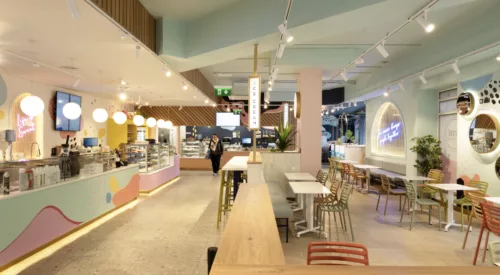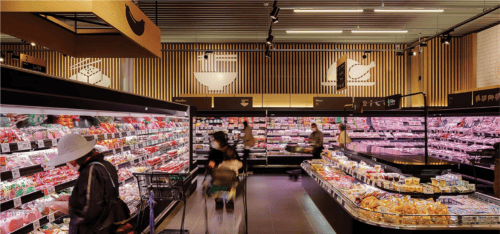Musgrave recently announced plans to roll out light fittings made from recycled CDs (using 3D Printing technology) in their SuperValu Stores while internationally, businesses such as Nike, Ikea and Starbucks are planning sustainable stores that reflect their brand values, CSR (Corporate Social Responsibility) Goals and use tools such as LEED (Leadership in Energy and Environmental Design) to give them the edge.
So why is it important?
Simply put, it’s what the customer wants!
7 in 10 consumers in Ireland are concerned about environmental issues, and 51% believe environmental issues profoundly affect their lives. Check out the B&A – Sign of The Times document here.
Today’s consumers want brands that align with their own values and express their sustainable values honestly and transparently.
Store design is a highly visible way for your brand to express its sustainable values, and here are 3 examples of companies that are delivering unique experiences for their customers:
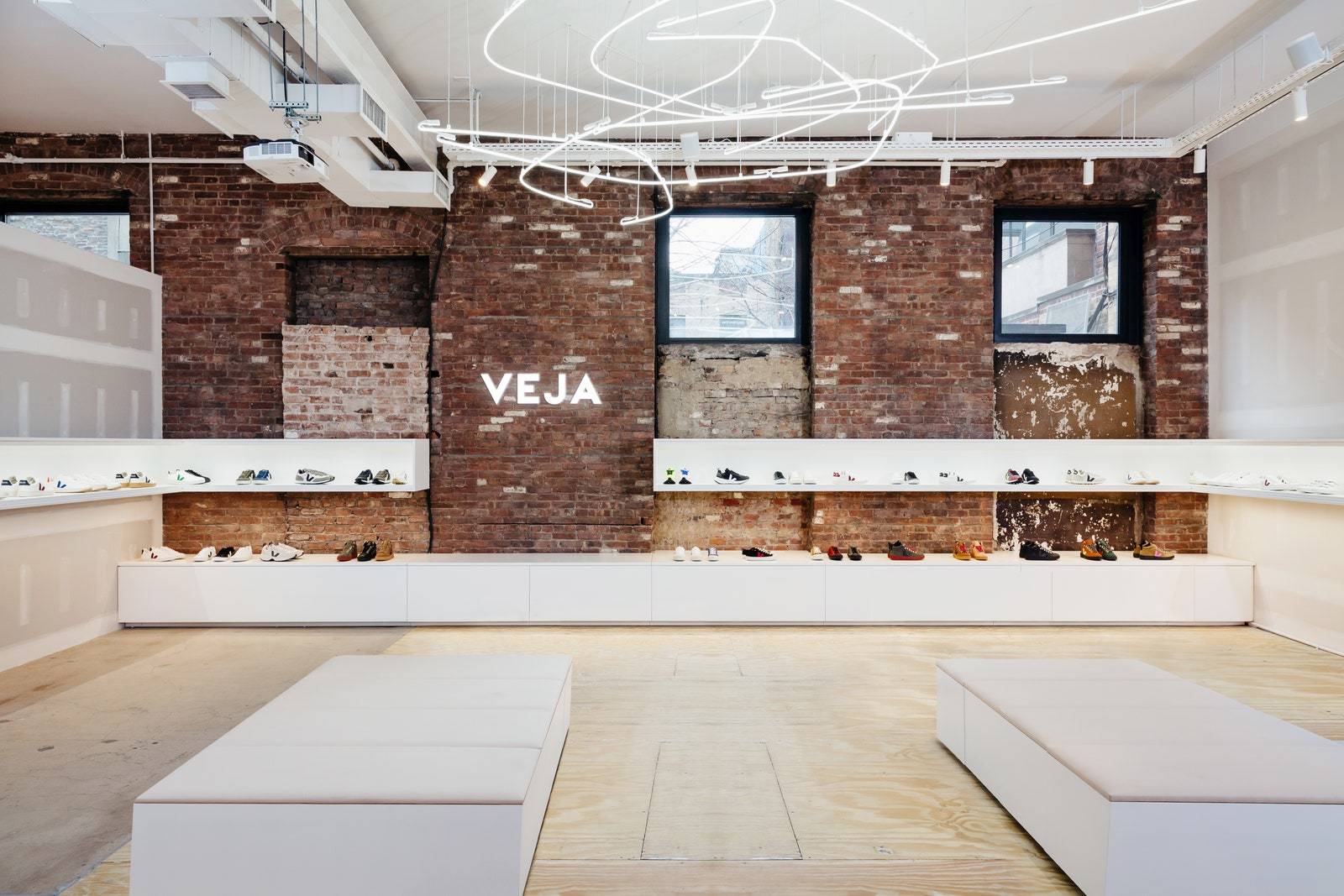 Veja New York Store
Veja New York Store
Veja, a sustainable footwear brand from Paris, created an eye-catching store in New York that is true to their brand. Veja aims to create footwear for all ages while committing to creating a sustainable supply chain. In this store, they’ve managed to present their product in an attractive way without making too much of a mark on the environment. A massive amount of material was not used by retaining the building’s existing walls, floors, and ceiling. Only the windows were painted and the floors stained to freshen it up. Display shelving was added along with some lightboxes and a feature light in the store’s centre to represent the product and brand.
This is a beautiful example of how a brand can thoughtfully communicate it’s values, excite their customers and get them talking about their products.
https://www.veja-store.com/en_eu/shop-view-newyork
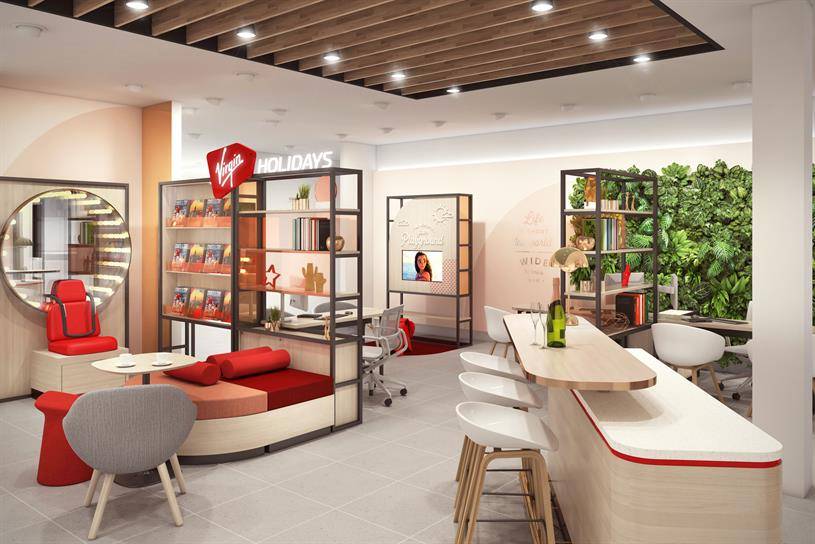 Virgin Holidays at Next
Virgin Holidays at Next
Virgin Holidays recently teamed up with Next in the UK to bring a ‘pop-up’ customer experience in store. The store was designed around ‘a kit of parts’ that were modular and interchangeable. These parts; made up of desks, display units, and shelving, allow flexibility in the store and can be moved on to a new location when it’s life cycle is finished.
This store design was rolled out across the UK, and the well-designed kit of parts reduced the need for bespoke manufacturing for each store. The modular displays’ flexibility allowed the store to be swapped around to give it a fresh look when required, reducing the need to add extra manufacturing. The simple kit of parts designed can be made locally, reducing transportation, and the solution opens itself up to being re-fit into other stores in the future.
This is a simple example of a considered, thoughtful solution that can offer a vast amount of flexibility while still looking on-brand and beautiful. Having this flexibility within a store creates opportunities to give customers new experiences without having to manufacture more stuff!
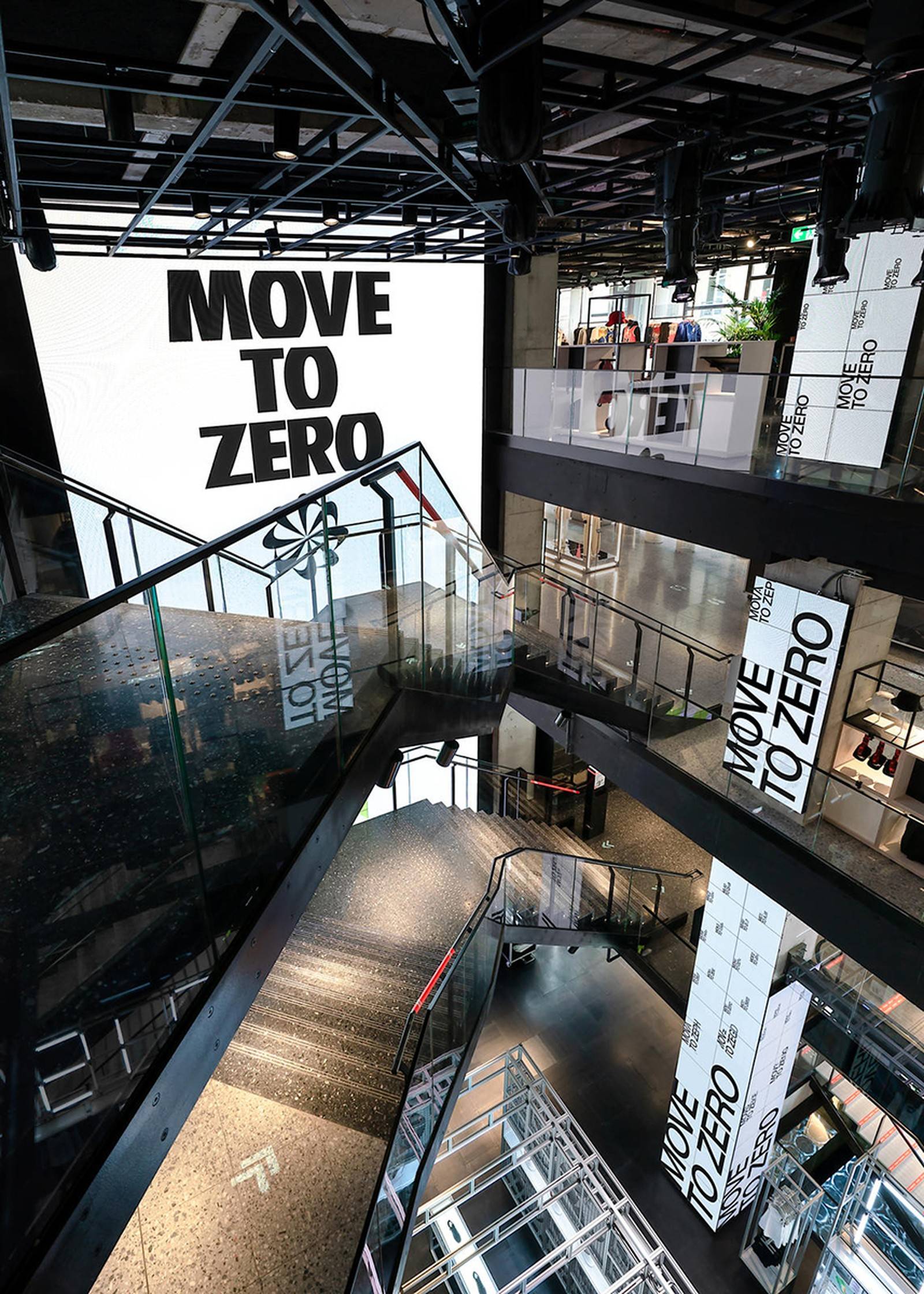 Nike-House of Innovation, Paris
Nike-House of Innovation, Paris
Nike’s climate change initiative called ‘Move to Zero’ aims to move the company to zero carbon and zero waste. In early 2020, they opened their 26,000 sq/ft flagship store in Paris to demonstrate the company’s values.
https://www.nike.com/sustainability
The store is a fully immersive brand experience, showcasing the latest and greatest Nike has to offer and blurring the line between physical and digital customer engagement. The move to zero initiative is thread throughout the building; it is powered 100% by a clean energy wind complex, and 85,000 kg of sustainable material was used to build the store.
This ‘move to zero’ initiative within a store helps Nike to clearly demonstrate it’s sustainable messages to its customers.
https://news.nike.com/news/nike-unite-retail-concept
So how do you make it work in your store?
With pressure from the UN and filtering down through governments, companies are now assessing their impact on the environment. When it comes to store design, manufacturing, and material suppliers are looking at solutions to deliver more sustainable material options. More and more carbon-neutral materials, reclaimed solutions, and sustainable alternatives are available to build future stores, so the possibilities are there.
But sometimes it comes down to decision making, how can we build the space in a more considered way? The above examples show what can be achieved when solutions are thought through and executed well, to give your business a competitive edge and connection with customers.
If you’d like to talk about how sustainability might work in the design of your store, feel free to contact me
